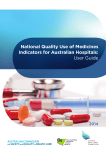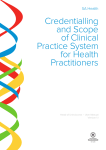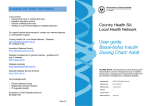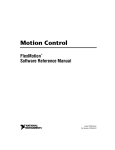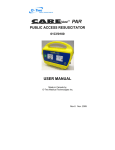Download National Medication Management Plan User Guide
Transcript
TRIM 36658 National Medication Management Plan User Guide November 2013 © Commonwealth of Australia 2010 This work is copyright. It may be reproduced in whole or in part for study or training purposes subject to the inclusion of an acknowledgement of the source. Requests and inquiries concerning reproduction and rights for purposes other than those indicated above requires the written permission of the Australian Commission on Safety and Quality in Health Care, GPO Box 5480 Sydney NSW 2001 or [email protected] Suggested citation Australian Commission on Safety and Quality in Health Care (2009), National Medication Management Plan User Guide. ACSQHC, Sydney. Acknowledgement The Commission acknowledges the work of Queensland Health’s former Medication Management Unit which developed Medication Action Procedure from which this work is adapted with permission. National Medication Management Plan User Guide 2 Table of contents 1. Preamble 1 1. Purpose 1 3. General instructions 2 4. Front page (including top section of page 3) 3 4.1 Identification of the patient 3 4.2 Allergies and adverse drug reactions 3 4.3 Patient location 4 4.4 Medication issues and management plan 4 5. Second page 6 5.1 Recently ceased or recent changes to medicines 6 5.2 Sources of medicines list 6 5.3 General information 6 5.4 Medication risk identification 7 5.5 Medication history checklist 7 6. Third page 8 6.1 Medicines taken prior to presentation to hospital 8 6.2 Medication reconciliation on admission 9 7. Back page 10 7.1 Medication changes during admission 10 7.2 Comments 10 7.3 Medication discharge checklist 10 7.4 Recommending a home medicines review 11 References 12 Appendix 13 Guide for completing the Medication Management Plan form 13 National Medication Management Plan User Guide 3 1. Preamble The national Medication Management Plan (MMP) is an initiative of the Australian Commission on Safety and Quality in Health Care (the Commission). Designed for health services, the MMP is a standardised form to improve the accuracy and completeness of documented information and the continuity of medicines management, and that can be used by nursing, medical, pharmacy and allied health staff. The MMP is based on the Medication Action Plan developed by the Safe Medication Management Unit, Queensland Health. This work was done in consultation with nurses, doctors and pharmacists. The MMP aligns with the Australian Pharmaceutical Advisory Council’s Guiding principles to achieve continuity in medication management. It incorporates the minimum data set for a medication history outlined in Guiding Principle 4 - Accurate medication history.(1) Consistent documentation allows accurate interpretation of orders Communication problems between settings of care are a significant factor in causing medication errors and adverse drug events. Literature reviews have reported unintentional variances of 30 – 70% between the medicines patients were taking prior to admission and what they were prescribed on admission.(2) As many as 12% -18% of these errors were considered potentially harmful. (3, 4) Australian data shows that patients with one or more medicine omitted from their discharge summary are 2.3 times more likely to be admitted to hospital as those with no omissions.(5, 6) Medication reconciliation is a formal process that has been demonstrated to improve the continuity of medicines management, reducing medication errors by 70% and adverse drug events by over 15%.(7). The process involves: • obtaining and verifying a complete and current list of medicines taken prior to admission, • documenting this list on a standard form; • comparing the list against the medication orders on the NIMC (on admission and intrahospital transfer) or the discharge prescription and summary (on discharge); • ensuring any discrepancies are rectified as appropriate; and • documenting any resulting changes. A standardised form to record the medicines taken prior to presentation at the hospital and use for reconciling patients’ medicines on admission, intra-hospital transfer and at discharge is considered essential for the medication reconciliation process.(8)The national MMP provides Australian hospitals with a suitable form to use to for this purpose. 2. Purpose The national MMP form is to be used to record medicines taken prior to admission to hospital and aid medication reconciliation on admission, intra-hospital transfer and discharge. It can be used to replace the Medications taken prior to Presentation to Hospital section on the National Inpatient Medication Chart (NIMC). The MMP can be used for adult and paediatric patients. It is not to be used to record orders for, and administration of, medicines. The MMP is also intended to be used as a record of medication issues and actions taken during the patient’s episode of care. This information can be referred to during the patient’s episode of care and used to inform the preparation of the discharge summary and prescriptions at time of discharge. The MMP and the National Inpatient Medication Chart (NIMC) together form the main record of medicines for inpatients. The MMP should be kept with the active medication chart(s) throughout the patient’s admission. National Medication Management Plan User Guide 4 3. General instructions • Consider privacy issues when writing on the form as it may be kept at the end of the bed where visitors and other persons may have access to the information. o Use appropriate wording. Facts should be clear, objective, relevant, correct and within context. o Ensure wording in the issues and actions section is objective, discreet, respectful and non-critical of the patient and members of the healthcare team. Avoid phrases which implies another practitioner has made an error or missed something significant. Choose words such as "suggest" or "consider" rather than "do" or "needs". • Avoid using unsafe abbreviations. Use only accepted abbreviations. (See the National terminology, abbreviations and symbols to be used in the prescribing and administering of medicines in Australian hospitals) www.safetyandquality.gov.au/internet/safety/publishing.nsf/Content/NIMC_001). • Write legibly in ink. No matter how accurate or complete an order is, it may be misinterpreted if it cannot be read. Use ball point pen - black ink is preferable. • Do not use water soluble ink (e.g. fountain pen). • Do no use erasers or “whiteout”. Errors must be crossed out and corrections rewritten. • Keep the MMP with the active NIMC(s) throughout the patient’s admission. National Medication Management Plan User Guide 5 4. Front page (including top section of page 3) 4.1 Identification of the patient Complete the patient identification by EITHER • Affixing the current patient identification label OR, • As a minimum, the patient name, UR number, date of birth and gender written in legible print. The first clinician should print the patient’s name under the label to reduce the risk of the wrong identification label being placed on the form. 4.2 Allergies and adverse drug reactions Complete the Allergies and Adverse Drug Reactions section in the same way as on the NIMC. • Medical officers, nursing staff and pharmacists are required to complete “Allergies and Adverse Drug Reactions (ADR)” details for all patients. (Patients may be more familiar with the term allergy, than ADR, so this may be a better prompt). • If the patient is not aware of any previous allergy or ADRs, then the Nil known box should be ticked. • If allergy and ADR status is unknown, tick the unknown box. • The person documenting the information must sign, print their name and date the entry. National Medication Management Plan User Guide 6 • If any information is added to this section after the initial interview the person adding the information must initial the addition in the designated area. If a previous ADR exists, the following must be documented (as per the Guidelines for use of the National Inpatient Medication Chart including the paediatric version): • name of medicine/substance • reaction details (e.g. rash, nausea) and type of reaction (e.g. allergy, anaphylaxis) • date that reaction occurred, or an approximate timeframe (e.g. 20 years ago). 4.3 Patient location Clearly mark the patient’s date of admission, current hospital and ward location on the front page of the MMP. 4.4 Medication issues and management plan Any medication management issues and required actions should be documented in the Medication Management Plan section of the form (page 1). This area can be used: • to document any issues identified through the process of medication review • as a handover document between clinicians. On discharge (or on transfer to another health facility) any outstanding medication issues or actions should be transferred to the next healthcare provider. To document a medication issue, complete the following: • date that the issue was identified • description of the issue • any action that is required • the person responsible for that action • name and contact number of the person identifying the issue When the action has been completed, document the date of the action and a description of the results/ outcome of the action. This may be completed at a different time to the identification of the issue. National Medication Management Plan User Guide 7 Simple issues and suggested actions should be documented fully in the MMP and the prescriber notified by page with a note such as “see pt X’s MMP”. More complicated or urgent issues should be discussed verbally with the prescriber and the agreed actions documented in the MMP. Full documentation of issues and actions in the MMP serves as an extra check and reminder for the prescriber, as well as a record of decision-making for future reference. As the MMP may be kept at the end of the bed where visitors and other persons may have access to the information, wording should be objective, discreet, respectful and non-critical of the patient and members of the healthcare team. Avoid phrases which may imply another practitioner has made an error or missed something significant. Choose words such as "suggest" or "consider" rather than "do" or "needs". For example: Issue: On high dose steroids, risk of GI ulcer Proposed Action: Consider PPI for gut protection Issue: On gentamicin, risk of nephrotoxicity Proposed Action: Recommend 2 & 6 hour blood levels on 13/8, aim for AUC of 80. Consider twice weekly serum creatinine and dipstick urinalysis. Any urgent medication issues should be brought to the attention of the attending medical officer as soon as possible using more direct forms of communication such as telephone or pager. National Medication Management Plan User Guide 8 5. Second page This section of the form can be used to assist the interviewer obtain an accurate and comprehensive list of medicines that the patient is taking as well as information relating to the patient’s ability to manage their medicines. 5.1 Recently ceased or recent changes to medicines Recently ceased or recent changes to medicines can be recorded in this section of the form along with other relevant information such as the reason for the change. Recent changes to a patient’s medicines may highlight the possibility of an adverse drug event which may have been the cause of the patient’s admission. 5.2 Sources of medicines list Confirmation of the medicine list with a second information source improves the accuracy and completeness of the medicines list. The community healthcare provider(s) should be contacted if appropriate. Tick the source/s used, document who confirmed it and the date of confirmation. 5.3 General information This area is to be used to record whether the patient usually administers their own medicines, whether they have brought in their own medicines and the location the medicines are stored in the hospital. There is a section to record the preferred method of administration of medicines e.g. all medicines via gastronomy tube. For paediatric patients this section may be used to record that oral liquid preparations are preferred, or how the parent successfully manages medicines at home (e.g. “mix with apple puree and give on a spoon” or “difficulty swallowing, all meds through gastrostomy, flush well with water”). There is also a prompt for documenting the immunizations status of paediatric patients. This may assist in diagnosis, and to plan for opportunistic vaccination where appropriate. Specific comments can be written alongside e.g. “up to date at 2 months, catch up schedule planned for discharge, in end-of-bed folder” or “winter flu vaccination given in April”. National Medication Management Plan User Guide 9 The contact details of the patient’s general practitioner, community pharmacist and residential care facility (if relevant) can also be recorded in the General Information area. These contact details may be useful when confirming the patient’s medicines taken prior to presentation to hospital as well as other details. 5.4 Medication risk identification The medication risk identification allows documentation of the patient’s level of independence, the patient’s ability to self-administer medicines and adherence issues. It assists in the identification of issues which require some form of action by nursing, pharmacy or medical staff. For example the patient uses a blister pack (e.g. Webster pack) as an administration aid and a new pack will be required when the patient is discharged. 5.5 Medication history checklist The Medication History Checklist is a tool to assist in determining a patient’s complete medication history on presentation to hospital. It is recommended that the checklist is routinely used as part of the medication history interview with the patient or carer to help structure the interview and obtain as much information as possible. A National Medication Management Plan User Guide 10 6. Third page 6.1 Medicines taken prior to presentation to hospital The admitting medical officer, a pharmacist or other clinician trained in taking an accurate medication history should complete this section. The following should be documented: • • A complete list of all medicines normally taken prior to hospital admission (prescription, non-prescription (over-the-counter) and complementary medicines). For each medicine: o Medicine details (generic and brand name, strength, form and route) o dose and frequency o indication for use (confirm with patient) o duration of therapy, i.e. when therapy was started o Initials and profession of the person(s) obtaining and recording the information Whether the patient has more than seven days supply of medicine (this may be at home or have been brought into hospital by the patient). This information will help ensure that at discharge the patient receives only those medicines they require and reduce the potential confusion caused by duplicating the supply of medicines. Paediatric patients Record details on the method of administration usually used in the medicine column. This should include the route e.g. NG, and the formulation e.g. oral mixture. It may be necessary to use an additional line for detailed information e.g. 10mg tablet dispersed in 10mL water, give 1mL. National Medication Management Plan User Guide 11 6.2 Medication reconciliation on admission The doctor’s plan to continue, withhold, cease or change the medicines on admission should be recorded for each medicine listed. If not, clarification must be sought from the attending medical officer. Each medicine taken prior to presentation should be checked against the medicines prescribed on the medication chart. Medicines which match (e.g. medication name, strength, dose, frequency), taking into consideration the Doctor’s recorded plan, should have a ‘tick’ placed in the reconcile column. If discrepancies are found and there is no clinical reason for the discrepancy they must be clarified with the attending medical officer and adjusted accordingly before being ticked as reconciled. National Medication Management Plan User Guide 12 Medication Management Plan (MMP) 7. Back page 7.1 Medication changes during admission This area is to be used to record any medication changes or rationale for change during admission which may be required at the point of discharge to inform the patient (or carer), General Practitioner (GP) or community pharmacy. This information may be included on the medication record in the discharge summary if appropriate. 7.2 Comments This section should be used to record any medication administration, supply notes or other information relevant to their discharge medicines. For example the patient may: 7.3 • require a dose administration aid which needs to be organised with their community pharmacy prior to the patient’s discharge • have an administration aid at home and does not require one on discharge (e.g.” has spacer device at home, do not re-supply on discharge”) • have to return to the hospital for a supply of a particular medicine if it is not available from their community pharmacy e.g.SAS product continuing on discharge • require community liaison services to be organised. Medication discharge checklist This checklist outlines common tasks which occur on discharge. Each task should be considered, completed if appropriate and documented. 7.4 Reconciliation on discharge When the medicines on the MMP have been reconciled against the NIMC, discharge prescription and summary the “reconciled on discharge” box in the Medication Discharge Checklist section should be ticked and the entry signed and date. National Medication Management Plan User Guide 13 7.5 Recommending a Home Medicines Review The home medicines referral section of the form helps the clinician determine whether a home medicines review is needed. If a referral for a home medicine review is required local processes should be followed to communicate this need to the patient and their GP. National Medication Management Plan User Guide 14 References 1. Australian Pharmaceutical Advisory Council. Guiding principles to achieve continuity in medication management. Canberra: Commonwealth of Australia; 2005. 2. National Institute for Health and Clinical Excellence. Technical patient safety solutions for medicines reconciliation on admission of adults to hospital. London 2007. 3. Vira T, Colquhoun M, Etchells EE. Reconcilable differences:correcting medication errors at hospital admission and discharge. Qual Saf Health Care. 2006;15:122-6 4. Gleason K, McDaniel M, Feinglass J, Baker D, Lindquist L, Liss D, et al. Results of the Medications at Transitions and Clinical Handoffs (MATCH) Study: An Analysis of Medication Reconciliation Errors and Risk Factors at Hospital Admission. J Gen Intern Med. 2010;25(5):441-7 5. Stowasser D, Collins D, Stowasser M. A randomsied controlled trial of medication liaison services - patient outcomes. Journal of Pharmacy Practice and Research. 2002;32(2):133-40. 6. Stowasser D, Stowasser M, Collins D. A randomised controlled trial of medication liaison services - acceptance and use by health professionals. Journal of Pharmacy Practice and Research. 2002;32:221-26. 7. Whittington J, Cohen H. OSF Healthcare's journey in patient safety. Quality Management in Health Care. 2004;13(1):53-9. 8. McLeod SE, Lum E, Mitchell C. Value of Medication Reconciliation in Reducing Medication Errors on Admission to Hospital. Journal of Pharmacy Practice and Research. 2008;38(3):196-9. National Medication Management Plan User Guide 15 Guide to completing the Medication Management Plan (MMP) Form Medication History Interview Confirmation of the medication history Reconciling the medication history Documenting the Interview Ideally a MMP Form should be completed for every patient on admission. Otherwise target selected patients (i.e. high risk patient). For example: • Elderly ≥ 65 years • Taking 4 or more medications • With a history of allergy or an ADR which may have contributed to the admission • With suspected poor level of adherence/compliance • With impaired renal function Document the medication information obtained on admission on page 3 of the Medication Management Plan (MMP) form At admission, record • GP and community pharmacy name and contact number (page 2) in the GENERAL INFORMATION section • All medication taken on admission in the MEDICINES TAKEN PRIOR TO PRESENTATION TO HOSPITAL section (page 3) – date, generic name (trade name),strength, form, route, dose, frequency, indication, and duration, using the checklist provided • Source of this information (page 2) • Any recently ceased or altered medications should be documented in the RECENTLY CEASED OR RECENT CHANGES TO MEDICINES section (page 2) Confirming the history • Confirm the history with a second source if possible and document in the SOURCES OF MEDICINE LIST section (page 2). Suitable sources include:- carer, family, nursing home, own medications and, where appropriate, their community health care provider (community pharmacist or GP) • Record the source and date of the confirmation • Verify the confirmed medication history with the patient or carer • Once confirmed, record the Dr’s plan (to continue, cease, withhold, change) for each of the medications listed (page 3) • Sign and identify yourself as the person obtaining and recording the information at the bottom of page 3 or in the “Date, Initials & Profession” column if adding to an existing list Reconciling • • Check that each medicine listed matches the medicines prescribed on the medication chart taking into consideration the Dr’s plan Tick the reconcile column once the medicine has been checked and matches the plan (Do not mark this column until the discrepancy has been resolved) Medication risk identification • Complete the medication risk identification on Page 2 Medication issues and management plan Discharge reconciliation & liaison Medication issues and management plan • Identify and document any medication issues on page 1 of the MMP form • Document proposed action required and person responsible • Identify yourself and provide a contact number • Document date and result of action taken (this may occur at a later date) Medication discharge checklist & referral for home medicines review • Use the medicines list (with consideration to the Dr’s plan and the Medication Management Plan) together with the medication chart and any discharge plan to reconcile the discharge prescription. Crosscheck with the discharge summary and follow up any discrepancies. • Refer to reconciled prescription when producing a discharge medication record/list (DMR) for the patient • Ensure all points on the discharge checklist have been considered and completed if applicable • On discharge send DMR to GP, community pharmacist and other community health care provider (if applicable) and document on page 4 of the MAP form • If applicable request a Home Medicines Review to be organised by the GP and tick reason for this request on page 4 of the MAP form The MMP form should be kept with the active medication chart and on discharge filed in the medical record with the medication chart for that admission National Medication Management Plan User Guide 16

















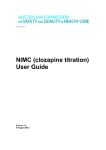
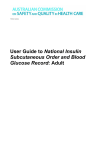
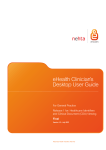
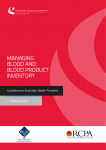
![MAPEAMENTO DE CONTROLE [CONTROLLER MAPPING]](http://vs1.manualzilla.com/store/data/006068957_1-5e2c8da72c516cb367b41ba39c141e7d-150x150.png)
